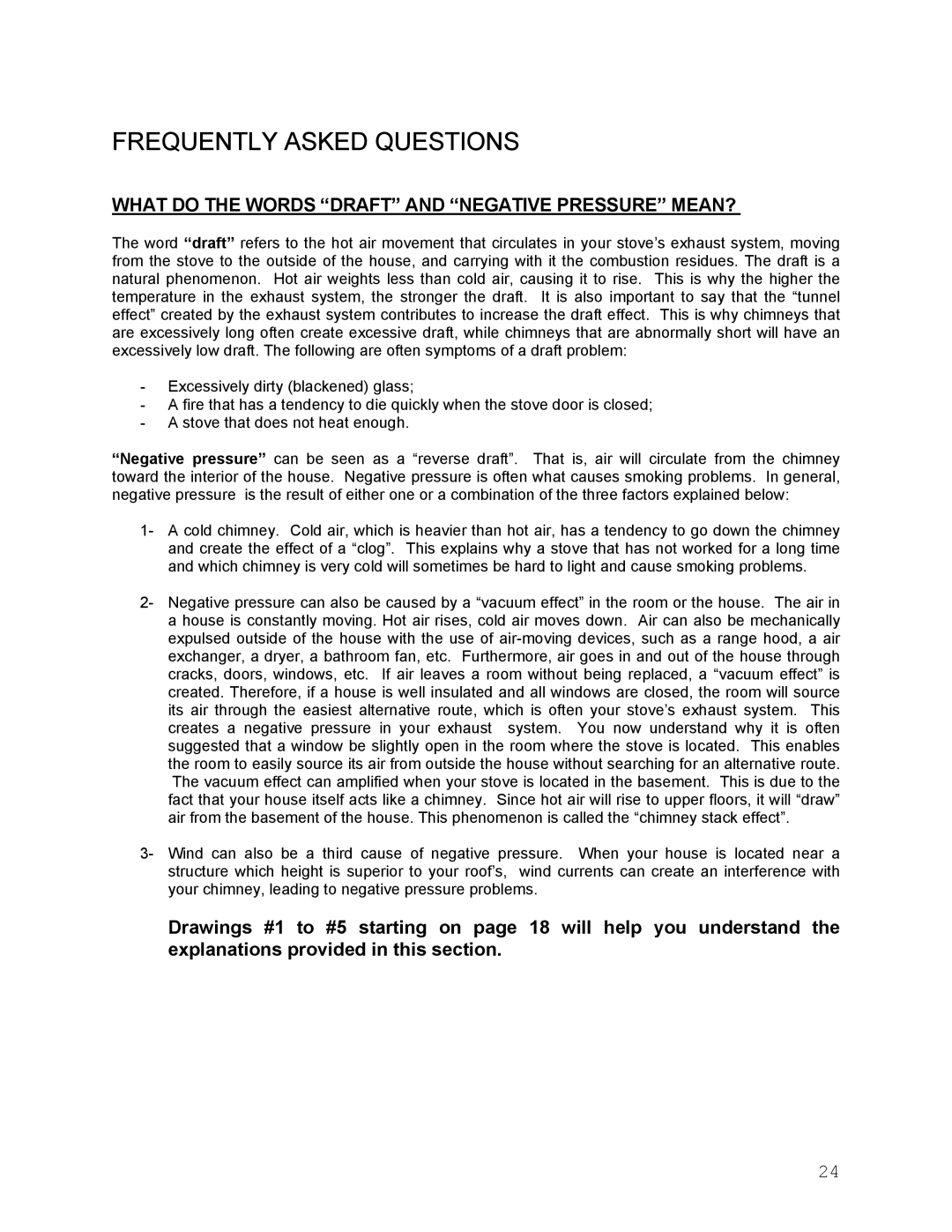Wood Stove specifications
Drolet Wood Stoves are renowned for their exceptional heating performance and efficient wood-burning technology, making them a popular choice for homeowners seeking an eco-friendly and cost-effective alternative to traditional heating systems. Founded in Quebec, Canada, Drolet has established itself as a leader in the wood stove industry, providing reliable heating solutions that combine innovative engineering with a commitment to sustainability.One of the main features of Drolet Wood Stoves is their high-efficiency ratings. Many models boast efficiencies exceeding 80%, allowing users to make the most of their firewood while minimizing emissions. This focus on efficiency not only helps homeowners save on fuel costs but also reduces the environmental impact associated with wood burning. The stoves are designed to meet or exceed stringent EPA emissions standards, ensuring cleaner air quality in the home and surrounding environment.
The technologies integrated into Drolet Wood Stoves are state-of-the-art. The stoves utilize secondary combustion technology, which injects heated air into the combustion chamber, igniting unburned gases and particulates. This process enhances the burning of wood and maximizes heat output while reducing smoke production. Additionally, many models feature a built-in air-wash system that helps keep the glass door clean, providing a clear view of the mesmerizing fire.
Drolet Wood Stoves are constructed with durable materials, including heavy-gauge steel and high-temperature paint finishes, ensuring longevity and resilience against the rigors of everyday use. The design of these stoves is both functional and aesthetically pleasing, with various styles and sizes available to suit different home decors and heating needs. Some models come equipped with advanced features like programmable thermostats and rear or side venting options for versatile installation.
Furthermore, Drolet offers a range of products that include freestanding, fireplace inserts, and cookstoves, making it easy for customers to find a solution that fits their specific space and heating requirements. Users can also select from various accessories to enhance their wood stove experience, including insulated chimneys and heat shields.
In conclusion, Drolet Wood Stoves combine efficiency, innovative technology, and stylish design, providing an effective and sustainable heating solution ideal for any home. With a focus on delivering top-notch performance and environmental responsibility, Drolet continues to be a trusted name in the world of wood burning.
